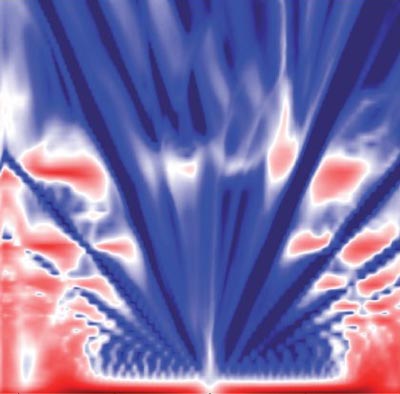 http://animatedcliparts.net/ http://animatedcliparts.net/ |
Hofstadter’s butterfly is a fractal pattern that describes the behavior of electrons in a magnetic field. Such a fractal was predicted by Douglas Hofstadter, which he described in 1976 [1]. It is a very rare example of a fractal arising from quite fundamental physics. |
However, all earlier attempts to experimentally observe see this pattern were unsuccessful. The wonder material graphene, first made by Andre Geim and Kostya Novoselov from the University of Manchester in 2004, came to the rescue…
For the first time ever a teams from Columbia University, the University of Manchester and MIT have experimentally observed this pattern [2,3,4].

|
Plot of electron density (horizontal axis) versus magnetic-field strength from data obtained by the Columbia team. (Courtesy: C R Dean et al. Nature 10.1038/nature12186)
Follow the link below to find out more.
Link
Hofstadter’s butterfly spotted in graphene, PhysicsWorld.com
References
[1] Douglas R. Hofstadter (1976). “Energy levels and wavefunctions of Bloch electrons in rational and irrational magnetic fields”. Physical Review B 14 (6): 2239–2249.
[2] C. R. Dean et. al, Hofstadter’s butterfly and the fractal quantum Hall effect in moiré superlattices, Nature (2013) doi:10.1038/nature12186
[3] L. A. Ponomarenko et. al, Cloning of Dirac fermions in graphene superlattices, Nature (2013) doi:10.1038/nature12187
[4] B. Hunt et. al, Massive Dirac fermions and Hofstadter butterfly in a van der Waals heterostructure, arXiv:1303.6942 [cond-mat.mes-hall]
i love butterfly and it is beautiful butterfly